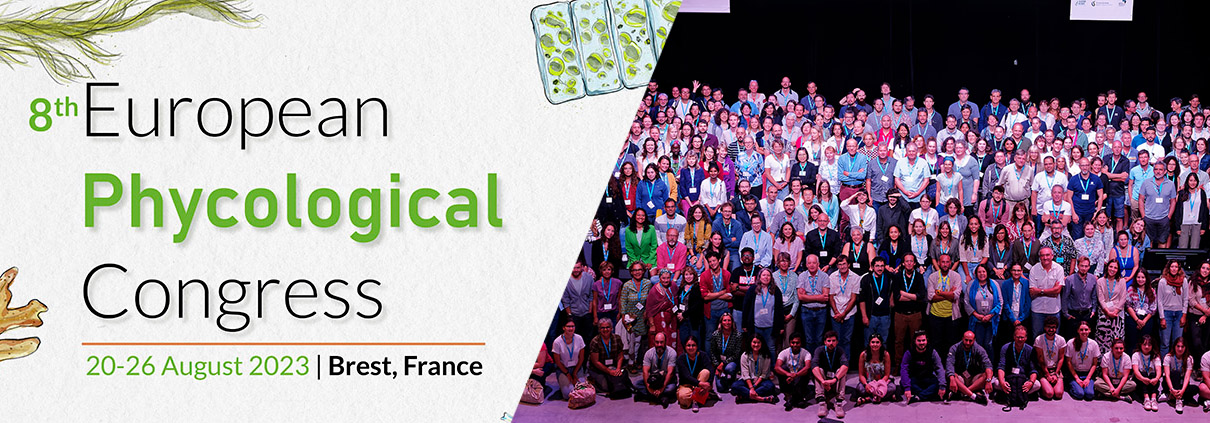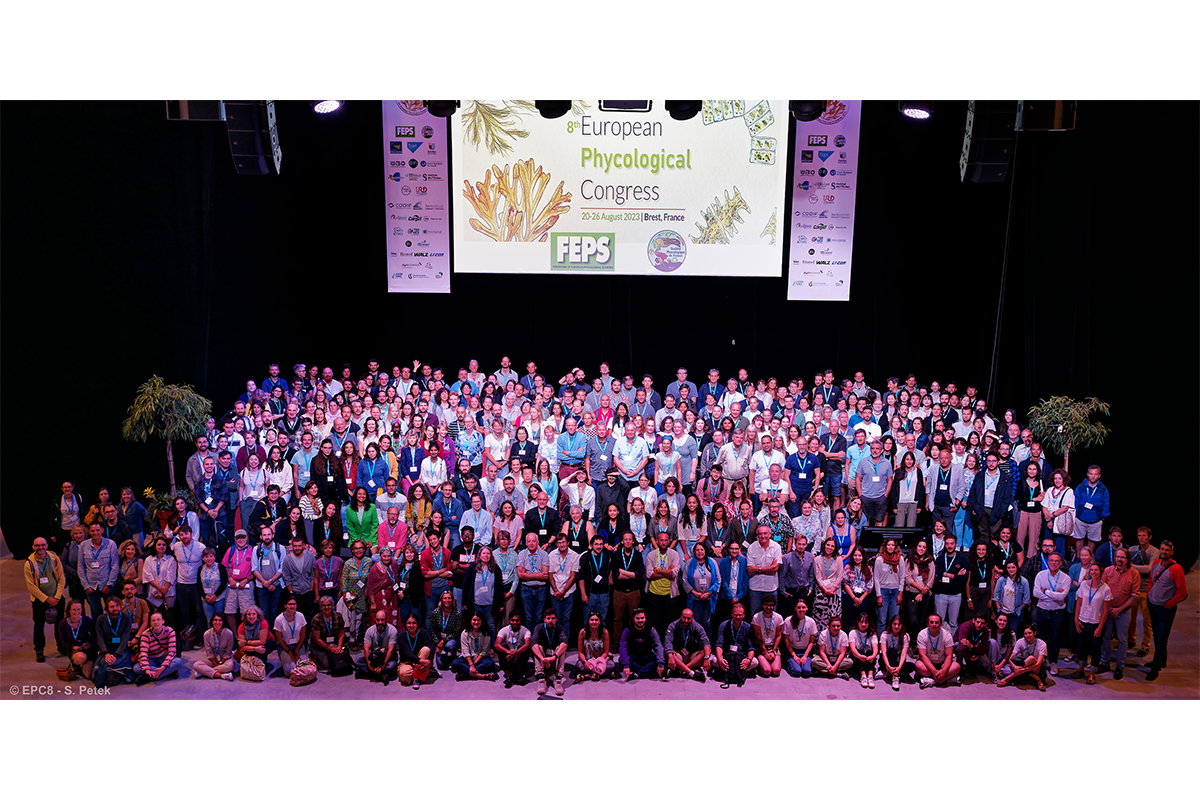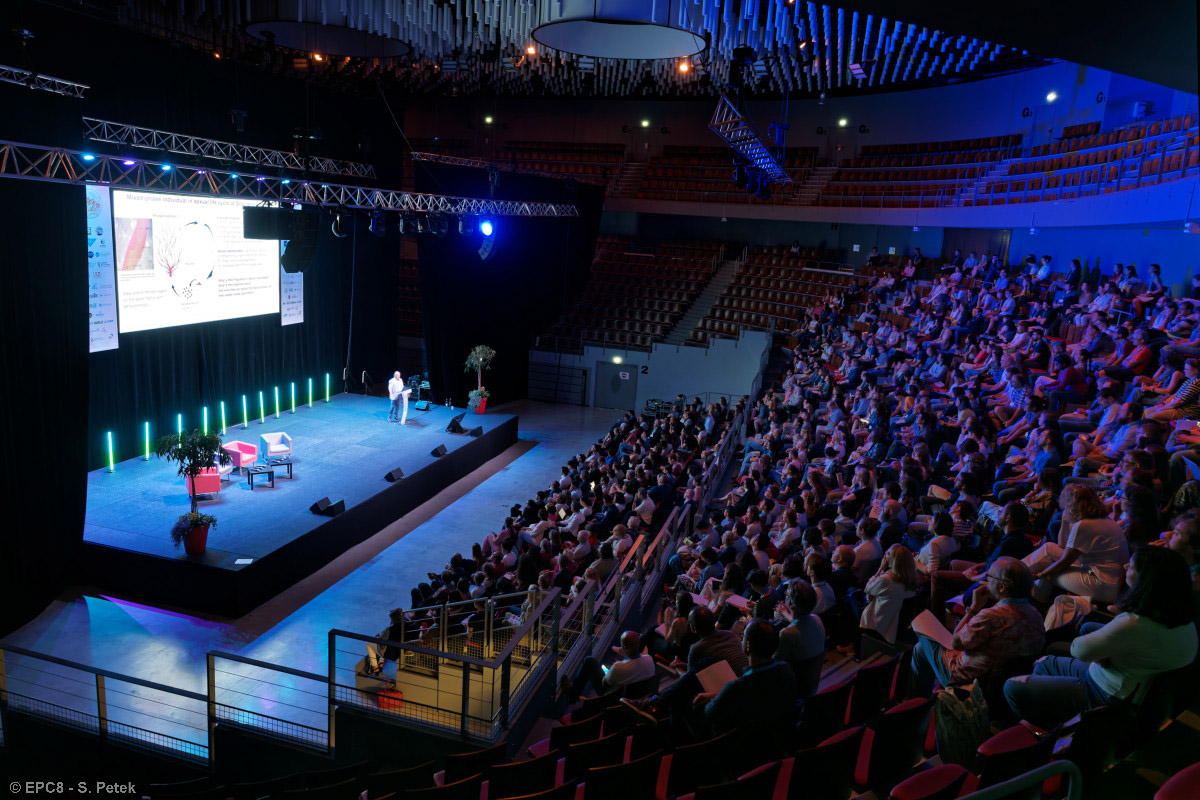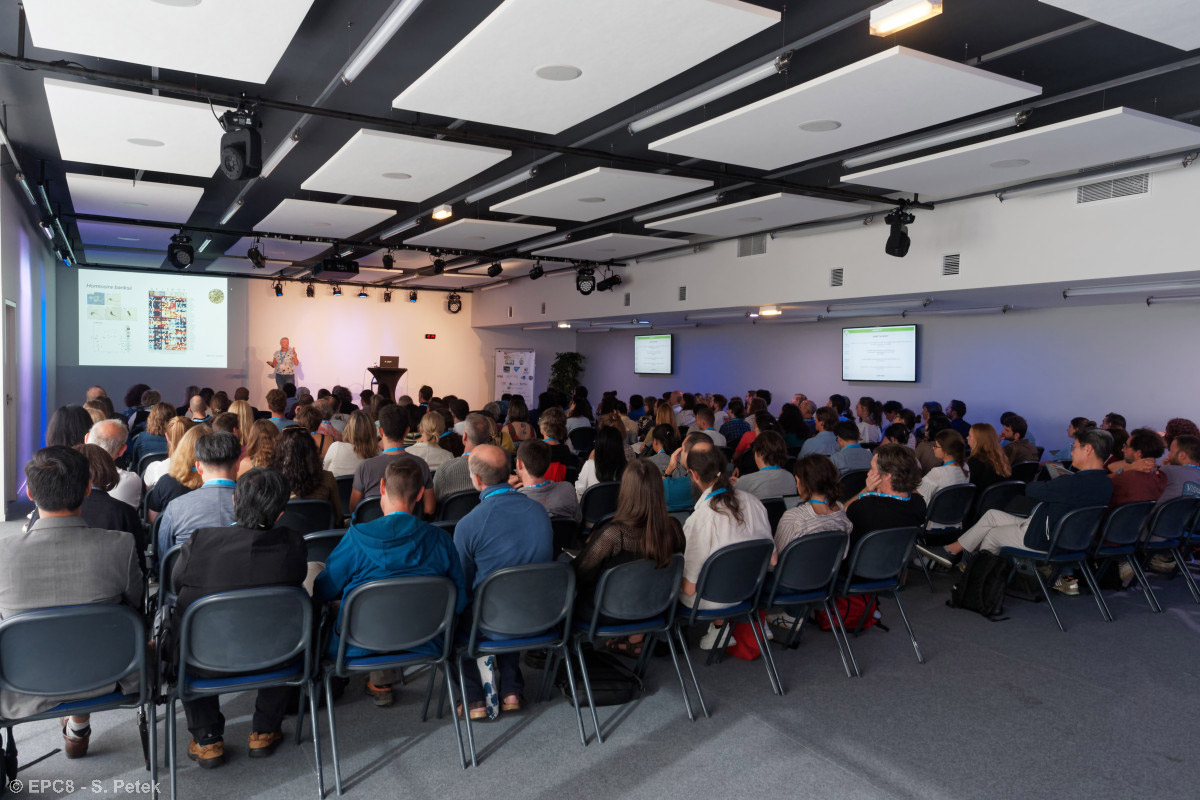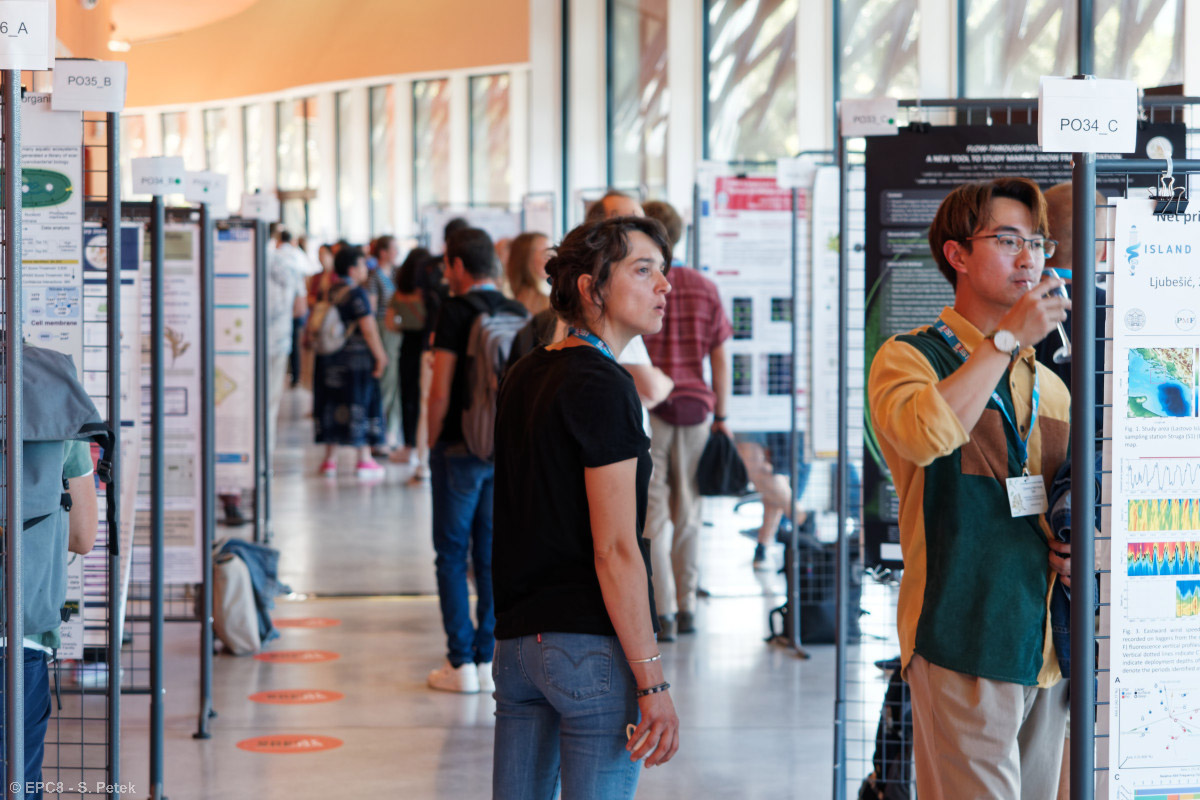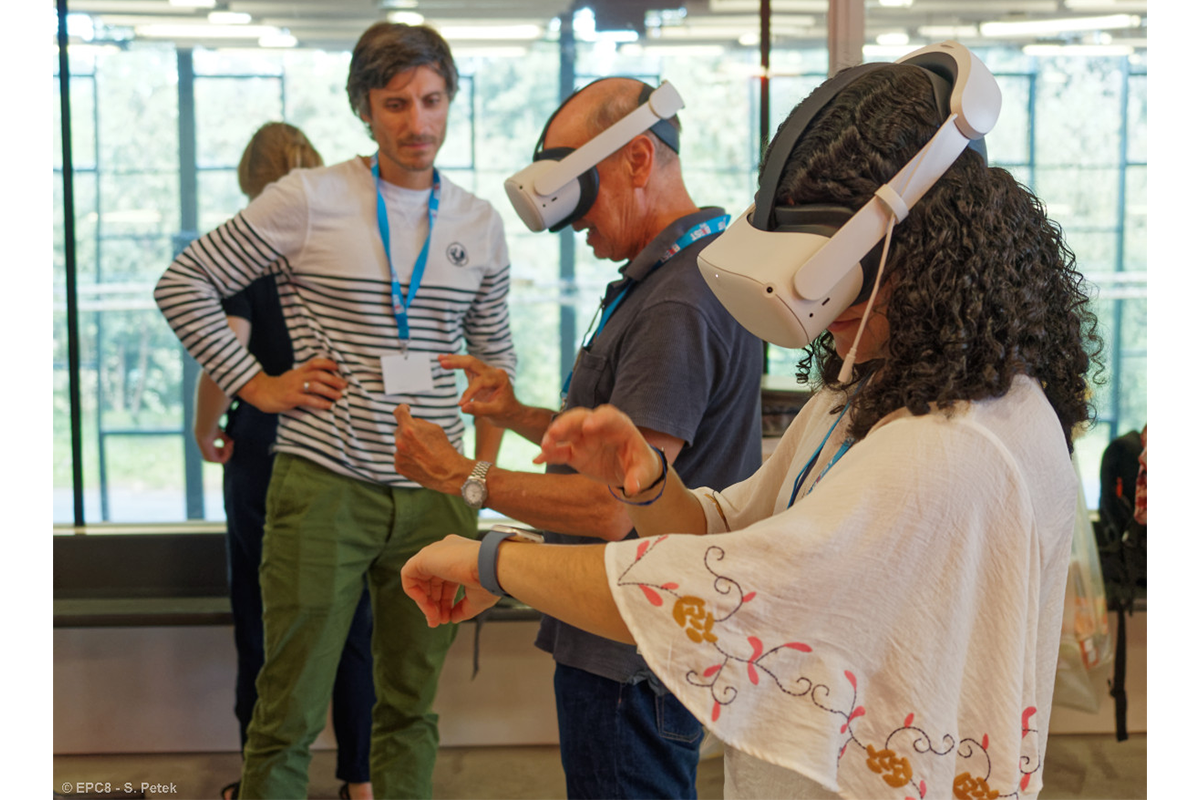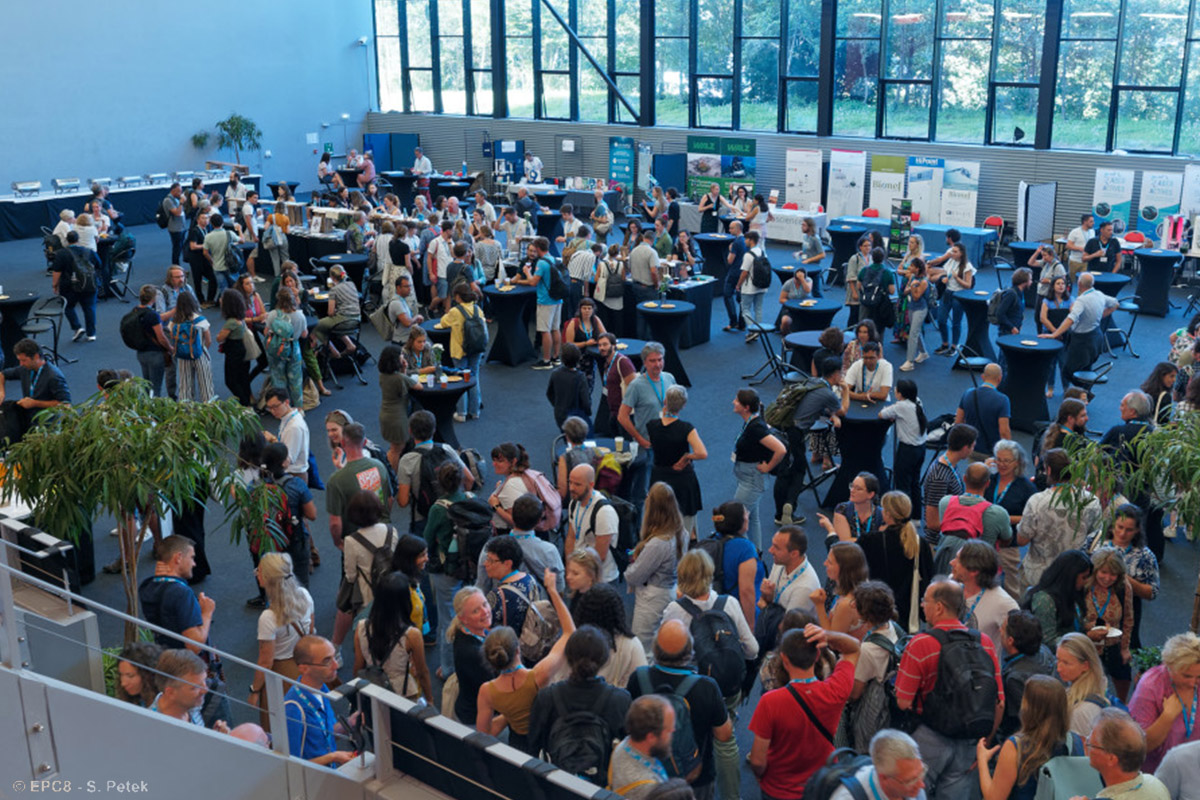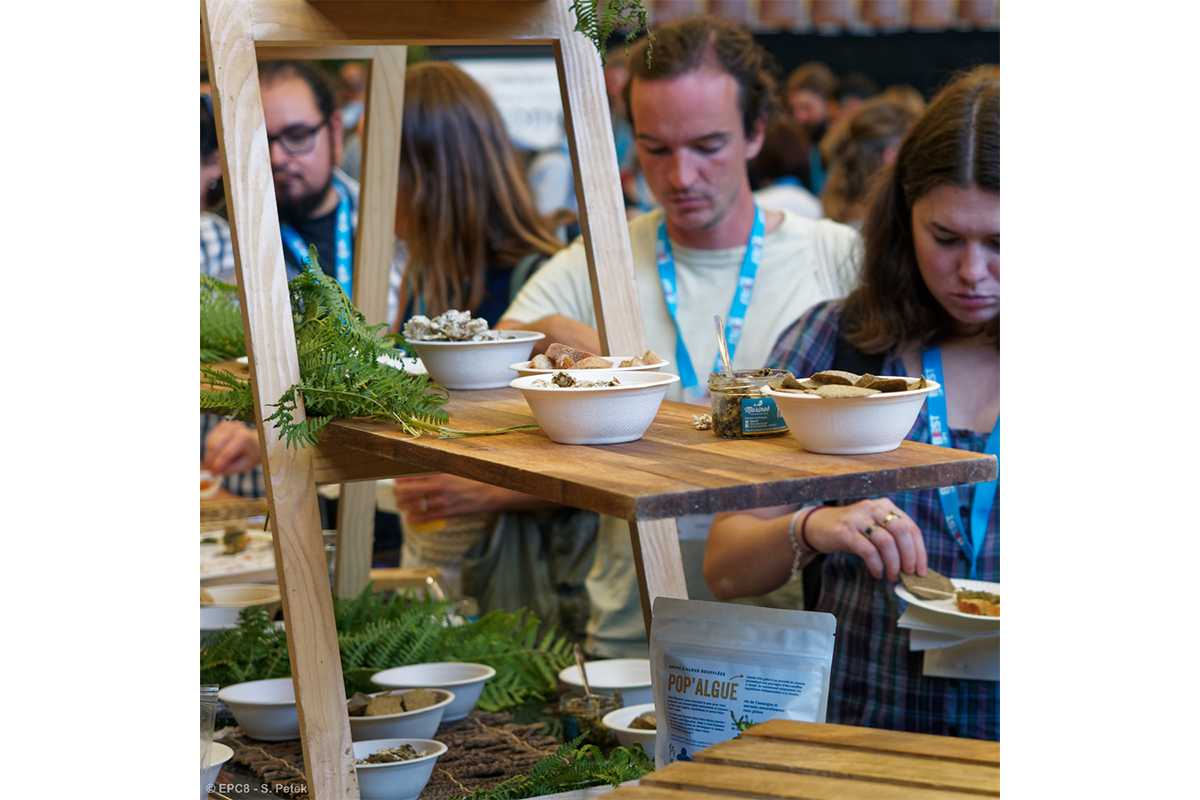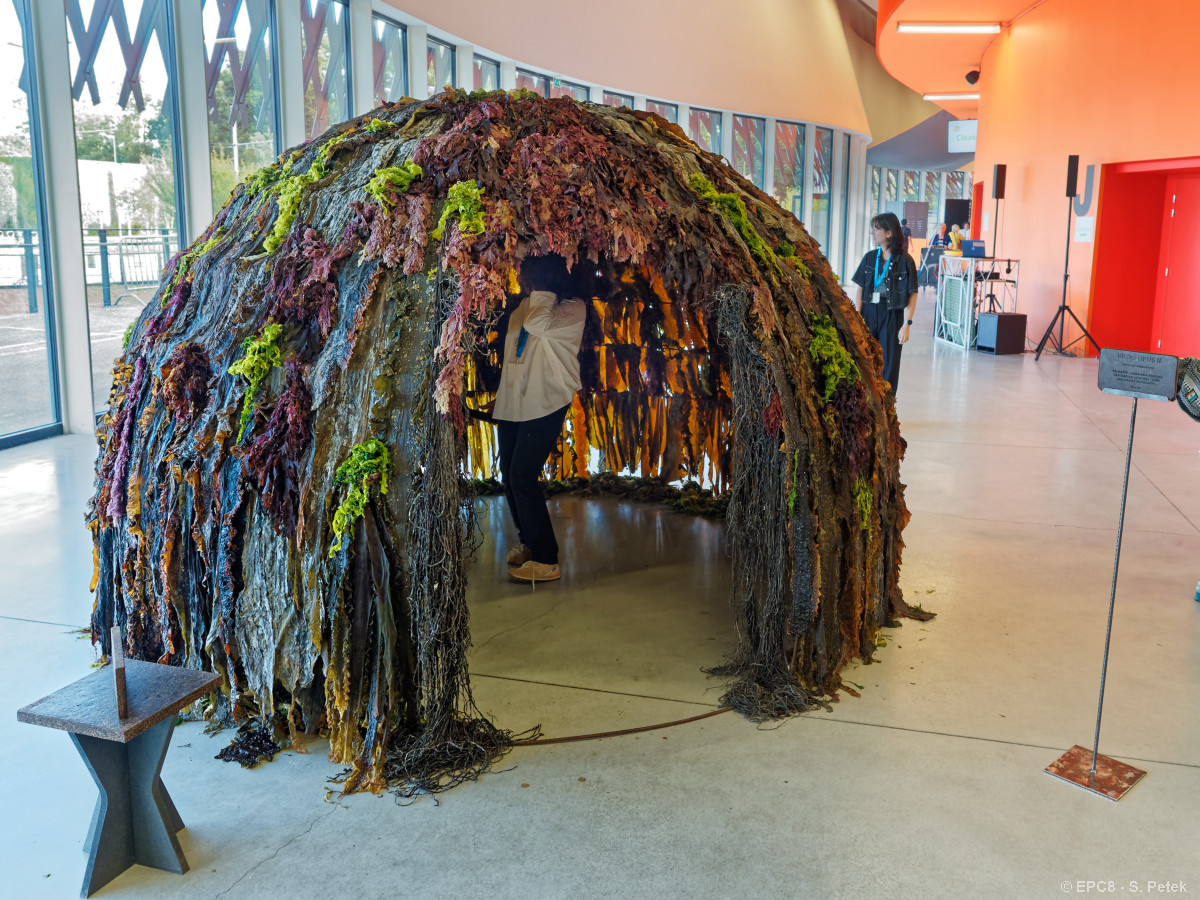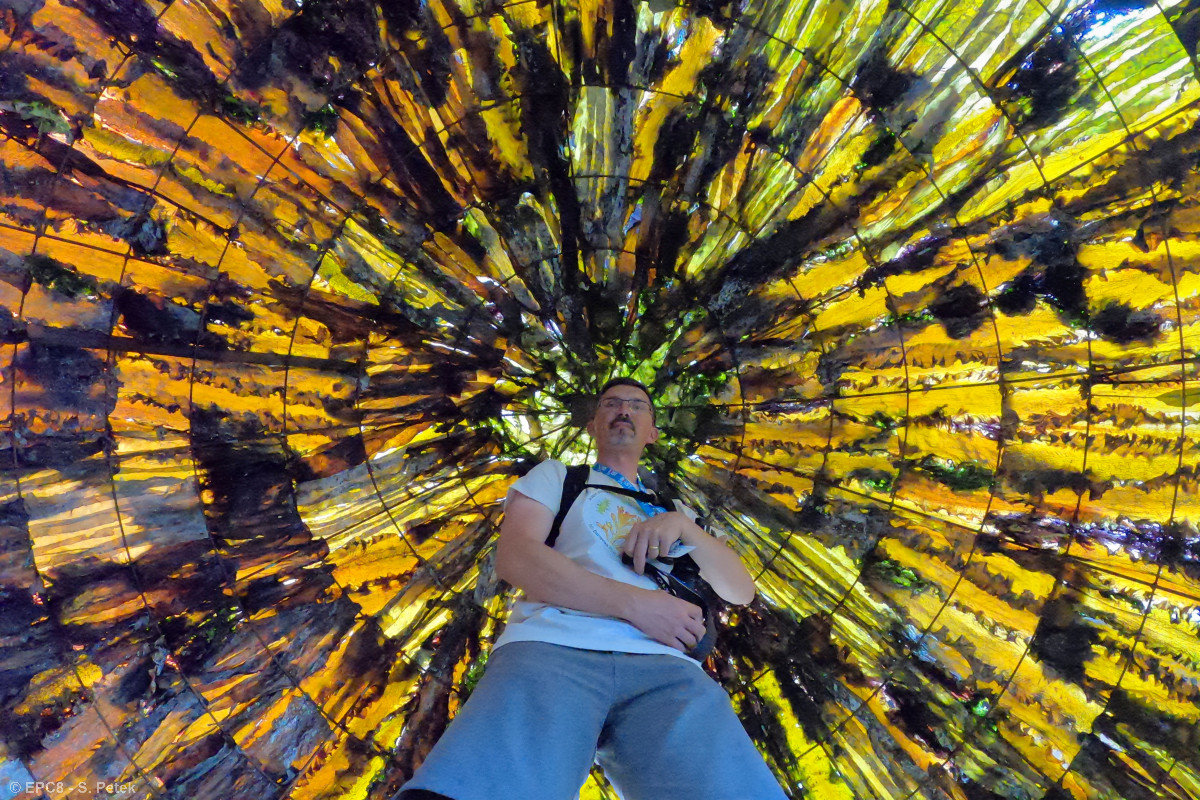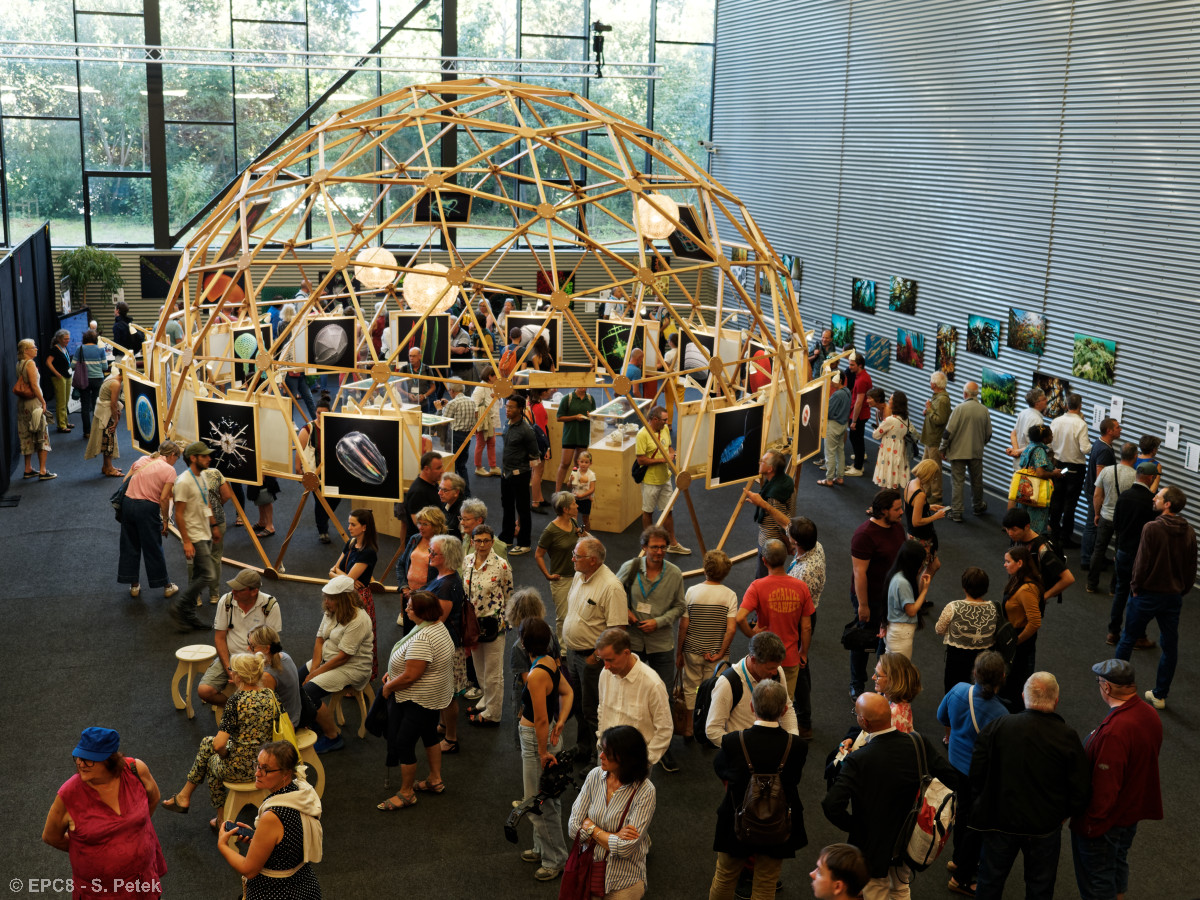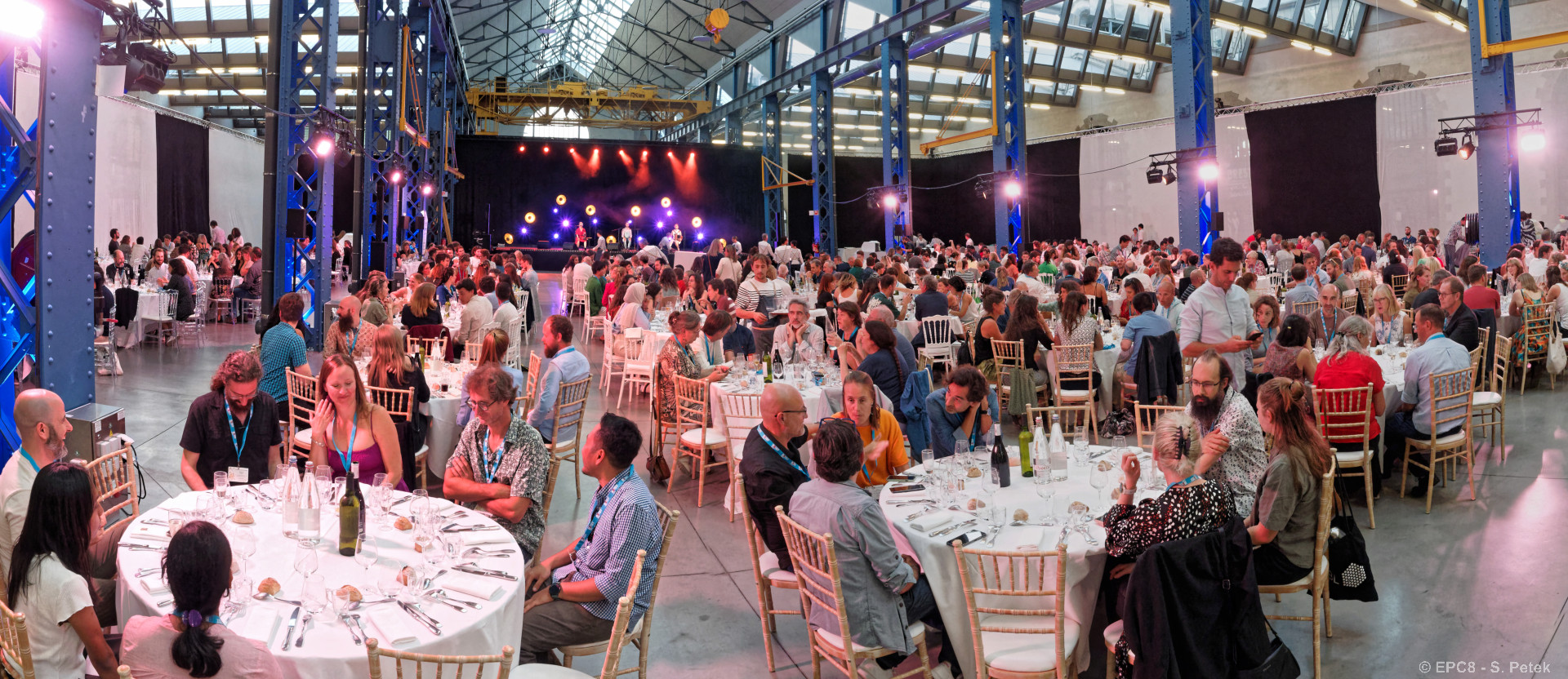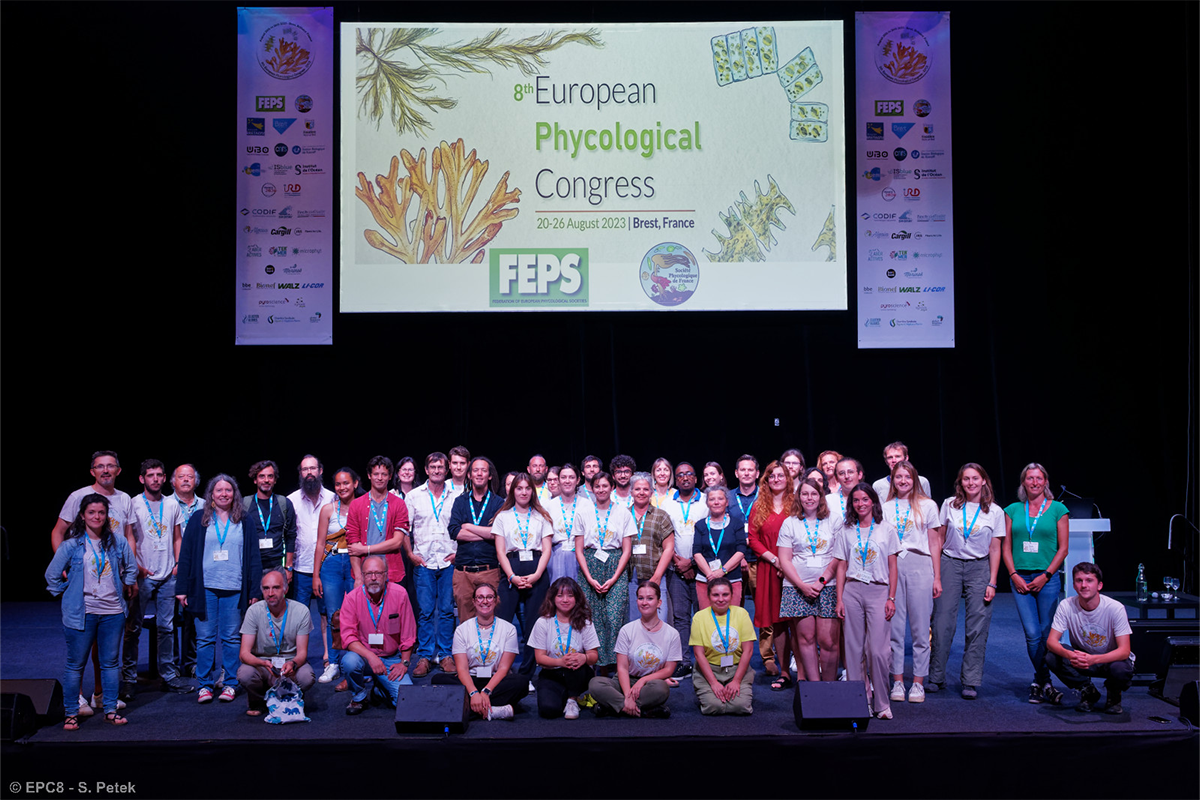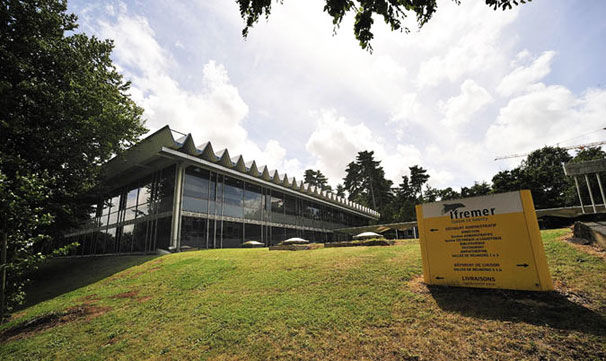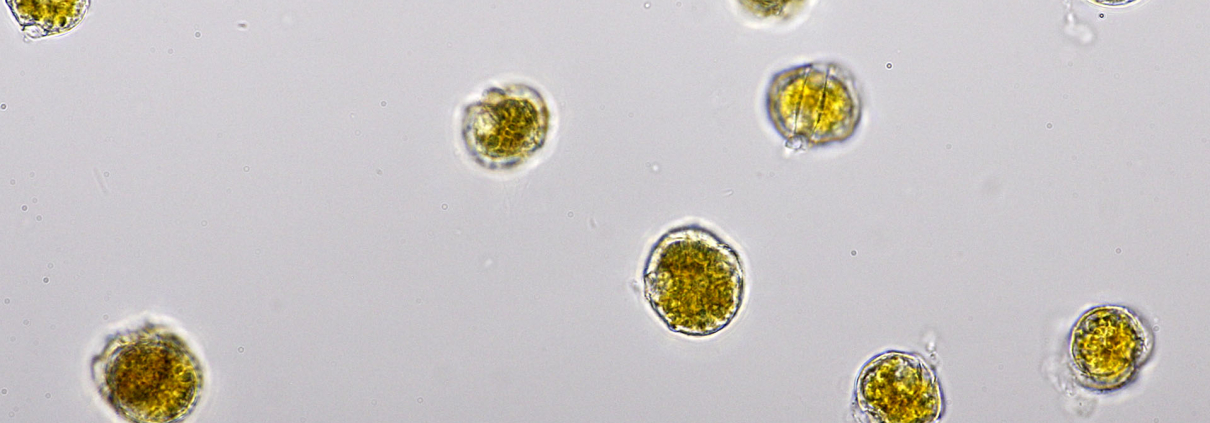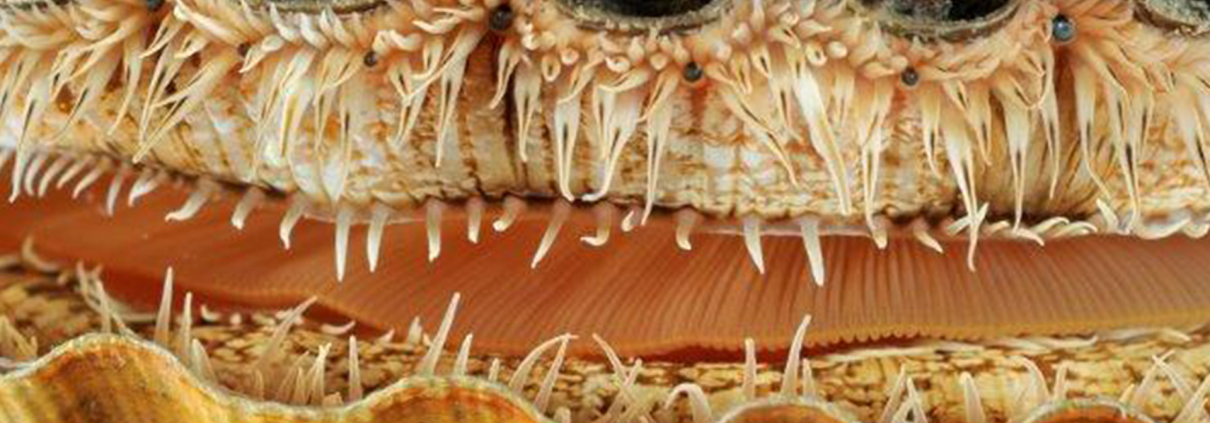A look back at the EPC conference in Brest
The 8th European Phycology Congress (EPC8), co-organized by Philippe Potin (Roscoff Biological Station – SBR) and Solène Connan (LEMAR-IUEM-UBO) under the authority of the Federation of European Phycology Societies (FEPS) and the Phycological Society of France (SPF), took place from August 20 to 26 at the Brest Arena. Supported by the Brittany Region, the Finistère Departmental Council, Brest Métropole, the University of Western Brittany, and ISblue, this congress brought together nearly 600 researchers, professors, PhD students, and Master’s students from 42 countries whose research focuses on algae, whether micro or macroalgae living in freshwater or marine environments.
Plenary presentations were held each day, covering topics such as the reproduction of red macroalgae, the diversity and adaptation of phytoplankton, diatoms and light, and kelp forests (Laminariales). Oral presentations and posters were grouped into 20 symposia in 6 sessions covering taxonomy, phylogenomics, biotechnology, primary production, the role of algae in ecosystems, and algae and the general public. Several PhD students, Master’s students, and staff from LEMAR and AMURE presented their work in these different symposia. On Wednesday, excursions (Molène, Crozon, Roscoff, Plouguerneau) or workshops were offered. About twenty companies, including local algae valorization enterprises, as well as the Chambre Syndicale des Algues et Végétaux Marines and the Cluster Algues-Bretagne, were represented and sponsored this congress.
Participants also had the opportunity to admire an exhibition titled “Immersion in the Heart of Algae,” at the interface of “Arts and Sciences,” related to the fascinating world of algae, whether planktonic and microscopic or forming vast underwater forests off our coasts. This immersive exhibition featured original works by artists inspired by marine algae, such as the work IGLOO OPUS II by Caroline Desnoëttes, in which sounds recorded within kelp forests by Lucia Di Iorio were played. The exhibition also showcased beautiful photographs of macro- and microalgae (photographers: Erwan Amice, Wilfried Thomas, Sébastien Colin & Marie Walde) and the “Planctonarium” dome created as part of the Plancton Planète project.
Furthermore, on August 21, a public evening on the theme “Intriguing Algae: Cooking, Cultivating, Understanding,” hosted by Vincent Doumeizel (UN Global Seaweed Coalition), attracted nearly 300 people who came to discover the exhibition and listen to presentations by Line Le Gall (MNHN) on algae, Hugo Morel (Bord à Bord) on seaweed cuisine, which included a tasting of seaweed tartare and chips, Martial Laurans (Ifremer) on seaweed harvesting and cultivation, and Marine Landa (SBR) on their microbiome.
Congress participants left delighted with the organization (a big thank you to the student volunteers!), the scientific program of the conference devised by Inka Bartsch (AWI, Bremerhaven, Germany), and Wiebe Kooistra (Stazione Zoologica Anton Dohrn, Naples, Italy), the exhibition, the venue (Brest-Arena), the meals served during the congress (featuring many local dishes), excursions or workshops, and the gala evening organized at Les Capucins, during which they could dance to Breton music!
And now, let the preparations for EPC9 in Krakow, Poland in 2027 begin!

